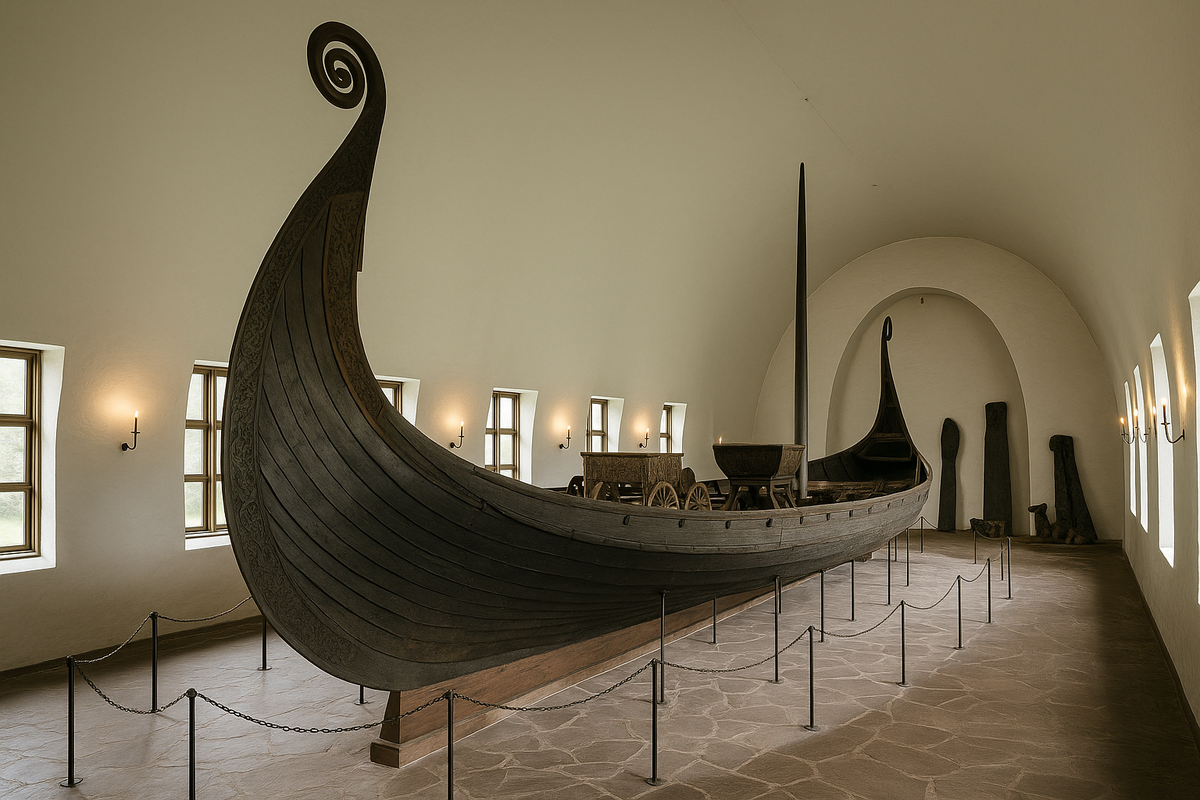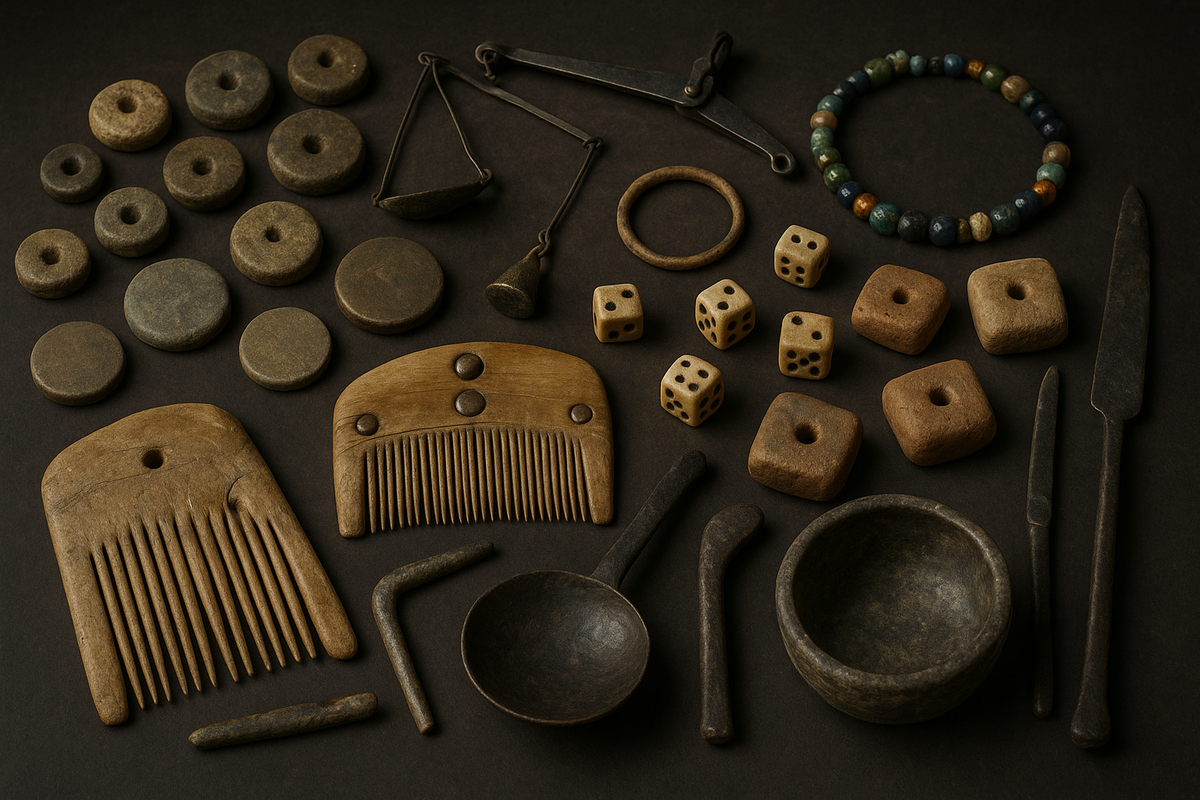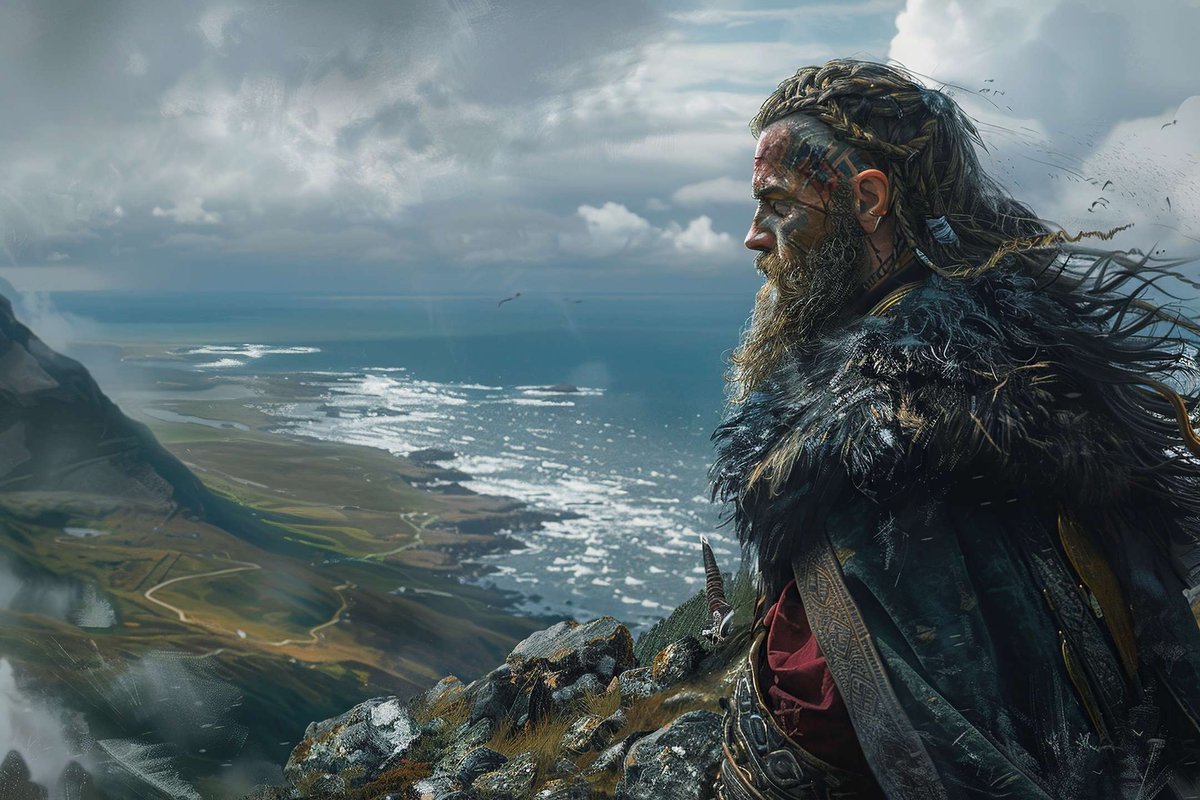Ships, swords and myths: where and how to see Vikings in Norway
Vikings in Norway are not just TV series and horned helmets (spoiler: they didn't exist), but real ships, glittering silver treasures and carved dragon heads that can be seen almost at arm's length. The museums of Oslo and the surrounding regions form an incredible "Viking trail" from archaeology and shipbuilding to mythology and everyday life. This article is packed with amazing information! You'll discover where to see the legendary ships, how the Viking Ship Museum differs from the Norwegian Viking Museum, what VÍKINGR has to offer at the Historical Museum, what interactive "magic" helps to understand runes and navigation, and where the longhouses and settlements of the Viking Age come to life in the regions.

Where is the Viking Ship Museum in Oslo, and what are its main attractions?
The Viking Ship Museum is on the Bygdøy peninsula, but it is currently closed because it is being renovated. It is being changed into the Museum of the Viking Age, which is scheduled to open in 2027. The main "stars" are three ships from royal burials (Oseberg, Gokstad and Tune) and the richest finds from Oseberg: animal heads, painted sleighs and a cart — the best carving and decorative art of the era. You can find out about the collections on the museum's website.
Are the Viking Ship Museum in Oslo and the Norwegian Viking Museum the same?
The term "the former building on Bygdøy" refers to the old building that used to be there. It will reopen as the Museum of the Viking Age after it has been renovated. Tourists often search for the 'Norwegian Viking Museum', but there is no official museum with this name in Oslo. It's not the same as The Viking Planet, a digital museum next to the City Hall. This is a virtual reality and multimedia experience about the Vikings, not archaeological ships. Check the addresses: Bygdøy is for original artefacts, while the city centre is for immersive experiences.
What does the Oslo Historical Museum show about the Vikings, other than ships?
When the ships are being repaired, you can see the archaeological "heart" of the era at the Historical Museum in the centre of Oslo. The VÍKINGR exhibition has collected valuable treasures, weapons, jewellery and the famous helmet from Gjermundbu. This is the only helmet from the Viking era that has been completely preserved. In the summer of 2025, the family exhibition Miðgarðr, the mythical world of the Vikings, opened. This was where the original snake head from the Oseberg ship was displayed for the first time. The Oseberg ship is an icon of Norwegian Viking iconography. It's the ideal place to learn about the period before visiting Bydgøy.
Which exhibitions at the Norwegian Maritime Museum (Norsk Maritimt Museum) best explain how the Vikings navigated the seas and built ships?
The museum on Bygdøy shows everything to do with Norwegian seafaring, from life on the coast to how ships are built. If you want to "read" a Viking ship, look at how it is built using a technique called clinker planking, which gives it both speed and strength. In 2021, the Nordic tradition of clinker boats was added to UNESCO's list of important cultural practices — a great way to understand why Viking ships were so effective. After visiting the Historical Museum, compare the shapes of early boats and the boats that came later in the boat halls.
What does the Oslo Viking Tour usually include?
The best combinations in Oslo are VÍKINGR at the Historical Museum (archaeology and context) + the "museum quarter" of Bygdøy: the Maritime Museum, Fram (polar expeditions as a continuation of maritime history), and sometimes the digital Viking Planet in the city centre. Some programmes add a day trip to Bø (Midgard) if you want to visit a "longhouse" and burial mounds. The details depend on the provider, but the general idea is to combine archaeology, navigation and cultural practices into one story. Look for the main sites in Bygdøy.
Where else in Norway, other than in Oslo, can you see ships and artefacts?
You can see a fully preserved ship in Oslo, after you visit the Museum of the Viking Age. But if you want to see colourful artefacts and reconstructions, head to the regions: The Midgard Viking Centre (Bore/Horten) has a "guild hall" and burial mounds.

The Lofotr Viking Museum (Lofoten Islands) has a longhouse and summer exits on replicas.
The Avaldsnes Viking farm has Nordveggen and a "Viking farm". The university museums in Trondheim (NTNU) and Bergen (?) have large collections of archaeological items, including weapons and hoards (NTNU has a new, large Viking exhibition).
How do museums show that popular stories about Vikings are wrong?
The first myth is about horned helmets. Archaeology knows of only one helmet from that era that is completely preserved — Gjermundbu, which does not have any "horns." The "horns" come from a romantic fashion of the 19th century and opera costumes (Wagner). The exhibitions in Oslo show real examples of protective gear and weapons, while texts and films explain that Vikings were not only warriors, but also farmers, craftsmen and traders. This popular science tone is used by VÍKINGR, Viking Planet and regional centres.
Which ship and settlement reconstructions are available outdoors?
Lofotr in Borg is a place where you can experience a "living" era. It has a long house, costumes, crafts, and in summer, you can row and sail on replica ships, throw axes and do archery (these activities are only available in some months of the year). Midgard in Bora is a magnificent "Gildhall" and a walk through Burre with burial mounds, often with workshops and games. Avaldsnes near Haugesund is a "Viking farm" on the island of Bukkøy, where they recreate what life was like and the rituals that were practised. These places are perfect for families and photographers.
What interactive activities can help us understand navigation, runes and crafts?
In the centre of Oslo, The Viking Planet offers an immersive experience: a VR film where you feel like you're on a ship, a cinema that has a 270-degree view, 3D artefacts and interactive timelines — all in one place, making it easy to understand routes, battles and the world of myths. There are lots of interactive activities in the area. In Lofotr, you can try rowing and archery, and the seasonal programmes in Midgard/Avaldsnes offer Viking games and crafts. This combination of digital and hands-on activities is ideal for travellers with children.
Where on Bygdøy should you go to follow the Viking path from archaeology to seafaring?
Bygdøy is a peninsula in Oslo that is home to many museums. Here, you can visit the Fram, a museum about polar expeditions, the Norwegian Maritime Museum, which focuses on coastal culture and shipbuilding, the Norwegian Museum of Cultural History, where you can see medieval Holgastvik in the open air, and the future Museum of the Viking Age, which is within walking distance. Start with the Fram (about the ship and storms), then go to the Maritime Museum (about boat traditions and navigation), and finally visit the Viking Age area (when you're ready). This creates a continuous "line" of the sea.
Which museum artefacts show us what life was like for the Vikings?
Look for trading weights and folding scales, measuring weights, weaving weights and spindle whorls, horn combs, dice, beads, kitchen utensils, and pieces of soapstone. These "quiet" objects explain the economy and everyday life better than swords. VÍKINGR focuses on hoards and crafts; the materials on Kaupang explain well the role of weights in the silver "weight economy." You can find such a set in university collections and at the central exhibition in Oslo.
Norwegian museums are simply amazing at showcasing the Vikings 'in all their glory', from the incredible craftsmanship of clinker planking to the stunning designs on brooches and weights, proving once and for all that there's no truth to those old myths about 'horns'. In Oslo, you can explore the era through archaeology at VÍKINGR, maritime history at Bygdøy, and immersive VR tools. In the regions, you can experience history at first-hand in the longhouses of Lofoten, the guild hall in Bore, and on a farm in Avaldsnes – what an adventure! Come and create your very own "saga" with your eyes, hands, and heart!

We can't wait to hear your thoughts in the comments!
If you have any interesting photos, personal experiences or questions on the topic, we would love to hear them – please leave a comment! We can't wait to hear from you! After all, we're the ones creating the most popular and useful blog about Norway!
We are thrilled to announce that the eagerly awaited Museum of the Viking Age in Oslo is set to open its doors in 2027! For now, you can catch a glimpse of some of the incredible Viking artefacts that will be on display at the Historical Museum. For the latest details, be sure to check out the museums' websites.





1 comment
Log in to leave a comment